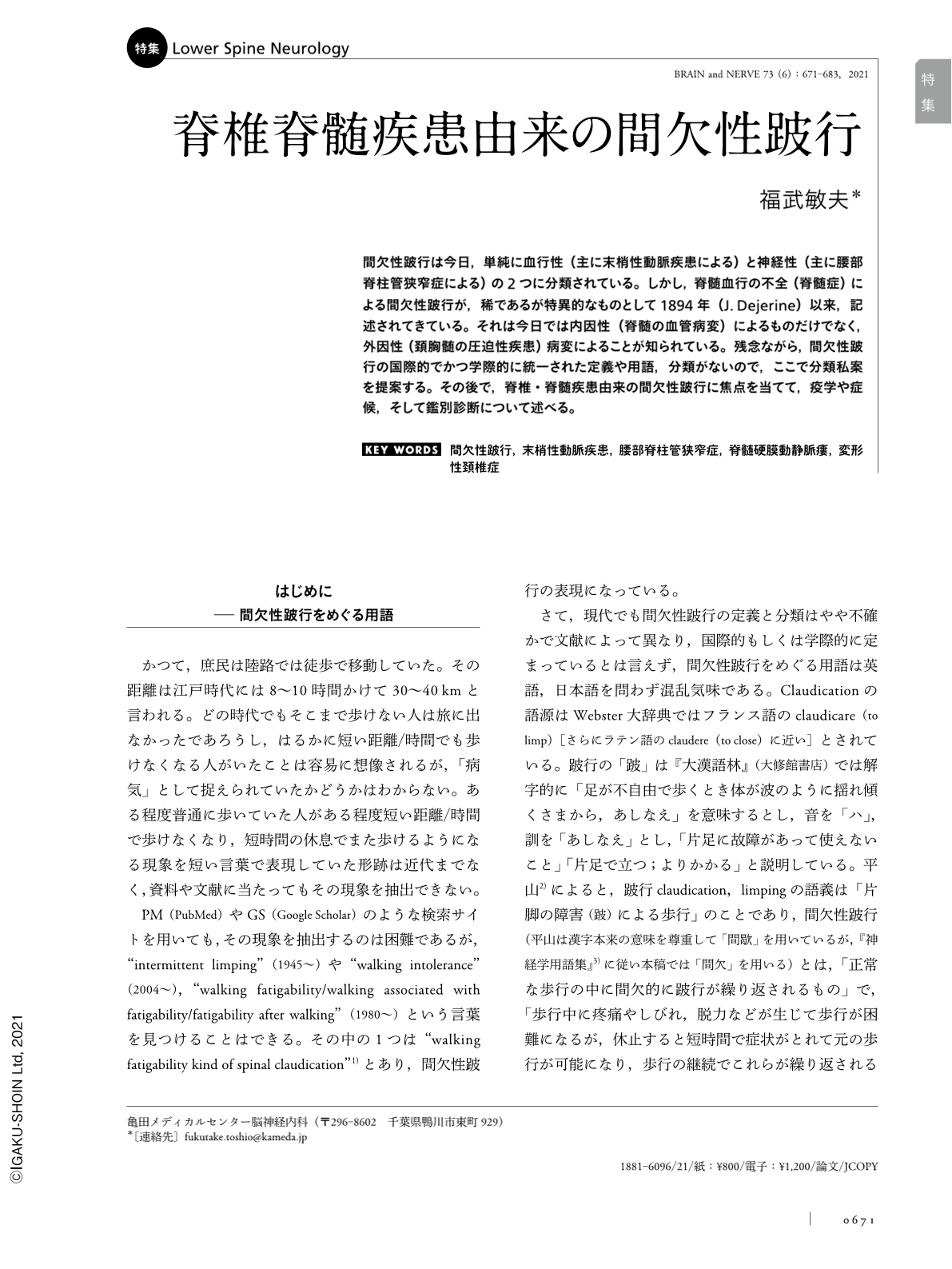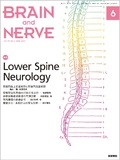Japanese
English
- 有料閲覧
- Abstract 文献概要
- 1ページ目 Look Inside
- 参考文献 Reference
間欠性跛行は今日,単純に血行性(主に末梢性動脈疾患による)と神経性(主に腰部脊柱管狭窄症による)の2つに分類されている。しかし,脊髄血行の不全(脊髄症)による間欠性跛行が,稀であるが特異的なものとして1894年(J. Dejerine)以来,記述されてきている。それは今日では内因性(脊髄の血管病変)によるものだけでなく,外因性(頚胸髄の圧迫性疾患)病変によることが知られている。残念ながら,間欠性跛行の国際的でかつ学際的に統一された定義や用語,分類がないので,ここで分類私案を提案する。その後で,脊椎・脊髄疾患由来の間欠性跛行に焦点を当てて,疫学や症候,そして鑑別診断について述べる。
Abstract
Currently, intermittent claudication is classified into the vascular (mainly secondary to peripheral arterial disease) and neurogenic (mainly secondary to lumbar canal stenosis) types. Intermittent claudication due to spinovascular insufficiency (myelopathy) has rarely been reported since it was first described by J. Dejerine in 1894. However, currently, intrinsic (vascular diseases of the spinal cord) and extrinsic (disorders causing cervicothoracic cord compression) factors are implicated as contributors to this condition. No internationally accepted, transdisciplinary and standardized definition, technical terminology, and classification of intermittent claudication are currently available. I propose a new classification in this article. I have focused on intermittent claudication secondary to spine and/or spinal cord diseases, with regard to its epidemiology, symptomatology, and differential diagnosis.

Copyright © 2021, Igaku-Shoin Ltd. All rights reserved.


